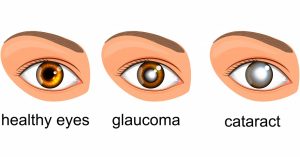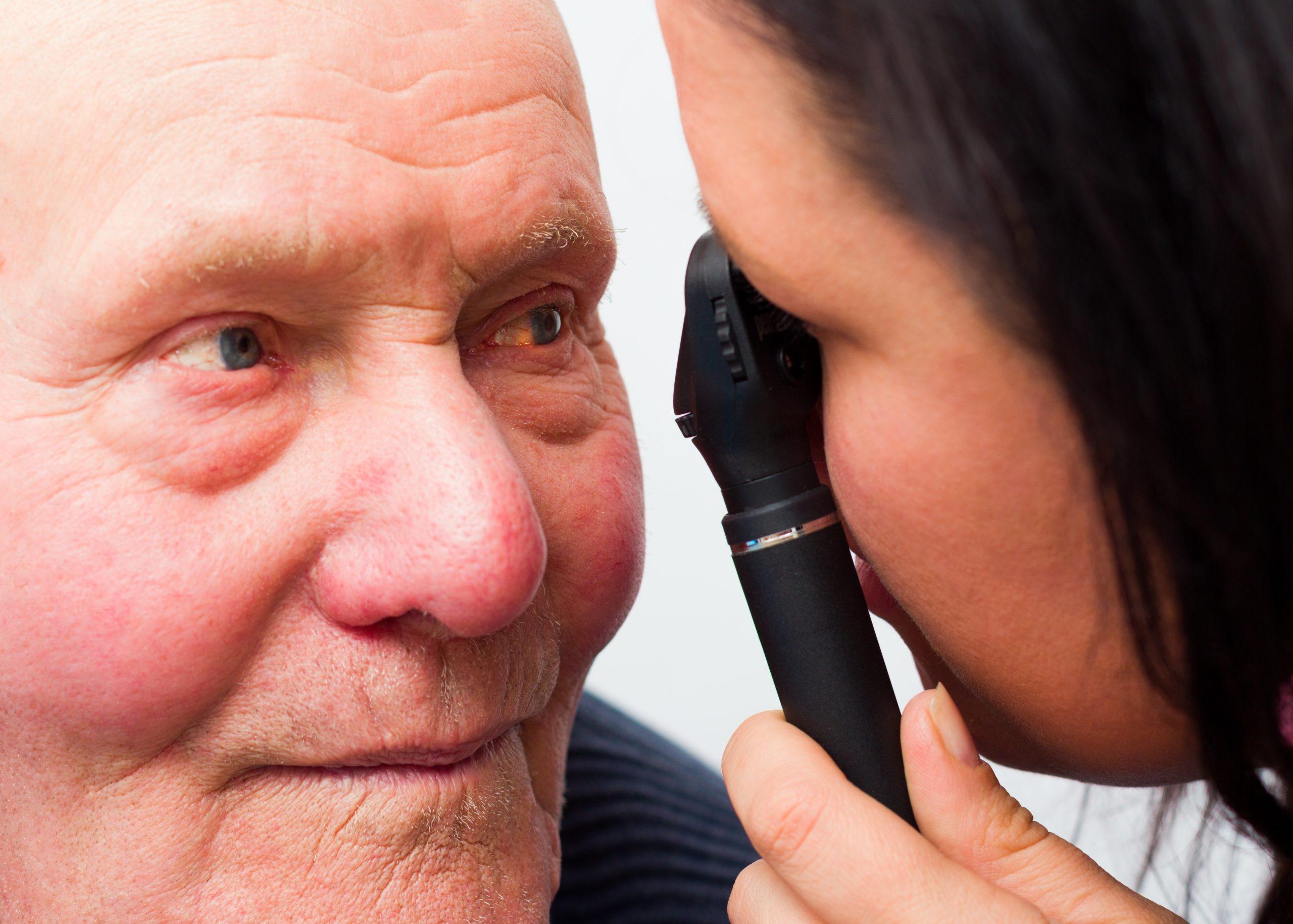Understanding the Impact of Age on Vision
As we journey through life, our bodies undergo various changes, and one area profoundly affected is our vision. The aging process brings about a multitude of transformations in our eyes, leading to several critical conditions that can significantly impact our overall eye health and quality of life.
Age-Related Macular Degeneration (AMD)
One of the most prevalent eye conditions associated with aging is Age-Related Macular Degeneration (AMD). This progressive deterioration of the macula, a small but crucial part of the retina responsible for central vision, can lead to significant vision loss in individuals over the age of 50. AMD manifests in two forms: dry AMD, characterized by the gradual breakdown of macular tissue, and wet AMD, marked by abnormal blood vessel growth beneath the macula, which can cause sudden and severe vision impairment. Explore More About (Dizziness After Meal)
Cataracts: Clouding Vision with Age
Cataracts represent another common age-related eye condition, affecting millions of individuals worldwide. This condition occurs when the lens of the eye becomes progressively cloudy, impairing vision and leading to symptoms such as blurred vision, increased sensitivity to glare, and difficulty seeing at night. While cataracts can develop at any age, they are more prevalent among older adults, with advancing age being a primary risk factor.
Glaucoma: The Silent Thief of Sight
Glaucoma is often referred to as the “silent thief of sight” due to its gradual progression and lack of early symptoms. This condition involves damage to the optic nerve, typically caused by increased pressure within the eye. As individuals age, the risk of developing glaucoma increases, making regular eye examinations essential for early detection and intervention. Left untreated, glaucoma can lead to irreversible vision loss and blindness.

Diabetic Retinopathy: Navigating Eye Health with Diabetes
For individuals living with diabetes, the risk of developing diabetic retinopathy significantly increases with age. This condition affects the blood vessels in the retina, leading to damage and potential vision loss if left untreated. As diabetes management becomes more challenging with age, it is crucial for older adults with diabetes to prioritize regular eye screenings and proactive management to mitigate the risk of diabetic retinopathy and its complications.
Strategies for Managing Age-Related Eye Conditions
While aging brings about inevitable changes to our vision, there are several strategies individuals can adopt to manage age-related eye conditions effectively and preserve their eye health as they grow older.
Regular Eye Examinations: A Foundation for Eye Health
Routine eye examinations play a pivotal role in detecting and monitoring age-related eye conditions. By scheduling regular visits to an eye care professional, individuals can identify potential issues early on and receive timely interventions to prevent further vision loss or complications. Comprehensive eye exams may include tests for visual acuity, intraocular pressure, and evaluation of the retina and optic nerve.
Healthy Lifestyle Choices: Nourishing Your Eyes from Within
Maintaining a healthy lifestyle can significantly impact eye health and mitigate the progression of age-related eye conditions. A balanced diet rich in antioxidants, omega-3 fatty acids, and vitamins such as vitamin C and vitamin E can support ocular health and reduce the risk of conditions like AMD and cataracts. Additionally, regular exercise, adequate hydration, and avoiding smoking can further promote overall eye health and well-being.

Medication Adherence and Disease Management
For individuals with existing age-related eye conditions or underlying health conditions such as diabetes, adherence to prescribed medications and treatment regimens is paramount. Following medical recommendations closely, including taking prescribed eye drops, managing blood sugar levels, and attending regular follow-up appointments, can help prevent disease progression and preserve vision in the long term.
Protective Eyewear and Sun Safety
Protecting the eyes from harmful ultraviolet (UV) radiation and environmental hazards is crucial for maintaining optimal eye health, especially as we age. Wearing sunglasses with UV protection and protective eyewear when engaging in activities that pose a risk of eye injury can help safeguard against conditions like cataracts and AMD. Additionally, maintaining proper eye hygiene and avoiding prolonged exposure to digital screens can reduce eye strain and discomfort.
Age-Related Eye Conditions
| Eye Condition | Description | Risk Factors | Symptoms |
|---|---|---|---|
| Age-Related Macular Degeneration (AMD) | Progressive deterioration of the macula, leading to central vision loss. | Aging, genetics, smoking, obesity | Blurred or distorted central vision, difficulty recognizing faces or reading. |
| Cataracts | Clouding of the eye’s lens, causing vision impairment. | Aging, diabetes, UV radiation exposure | Blurred vision, sensitivity to glare, difficulty seeing at night. |
| Glaucoma | Damage to the optic nerve due to increased intraocular pressure. | Aging, family history of glaucoma, ethnicity (African descent) | Gradual loss of peripheral vision, tunnel vision, eye pain or redness. |
| Diabetic Retinopathy | Damage to the blood vessels in the retina due to diabetes. | Diabetes, poor blood sugar control | Blurred or fluctuating vision, floaters, dark spots in vision. |
Conclusion
As we age, prioritizing eye health becomes increasingly important to maintain quality of life and independence. By understanding the impact of age on vision and implementing proactive strategies for prevention and management, individuals can navigate age-related eye conditions with confidence and preserve their precious gift of sight for years to come.
In conclusion, by embracing regular eye examinations, adopting a healthy lifestyle, adhering to medication regimens, and prioritizing protective eyewear and sun safety, individuals can empower themselves to tackle age-related eye conditions effectively and enjoy optimal vision well into their golden years.
Remember, proactive eye care is the cornerstone of healthy aging and enables us to embrace each day with clarity and vitality. Let’s prioritize our vision and embark on a journey of lifelong ocular wellness.




